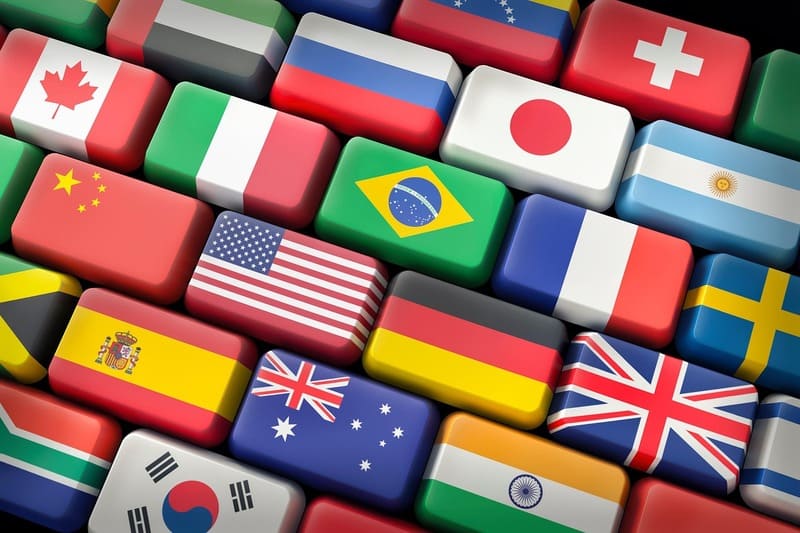Have you ever read instructions for a new gadget that left you more confused than before? Or tried to understand a car manual whose language felt that sounded too technical — as if written only for engineers?
Perhaps you’ve also encountered software with an interface that felt “out of this world,” because the translation was stiff and unnatural. Take, for example, the Windows interface in the 1990s — robotic, literal, and emotionless.
These are all clear examples of the importance of technical translation services. It’s the skill of translating technical jargon into clear, human-friendly language.
In today’s era of technological globalization, products from one country can be used worldwide in a matter of days. However, without good technical translation, these innovations can lose their meaning in the hands of users.
Technical translation goes beyond word conversion—it adapts context, terminology, and culture to keep the message accurate and clear.
Amidst the rapid development of global technology, technical translation serves as a crucial bridge between innovation and users. It ensures that technology is not only sophisticated but also accessible and understandable by anyone, anywhere.
When Language Meets Logic
Language and logic are like two old friends who often bicker. Language is fluid, flexible, and full of nuance, playing with meaning, metaphor, and emotion. Logic, on the other hand, is firm and rigid, demanding precision, structure, and consistency.
When the two meet in the world of technical translation, friction often arises. Language wants to sound natural and flowing, while logic demands uncompromising accuracy. If not balanced properly, users may struggle to understand technical instructions.
This is where technical translators play a vital role, bridging the gap between these two seemingly different worlds. A technical translator must be able to convey logical, technical messages into everyday language without losing their original meaning.
They must think like an engineer but write like a communicator. For example, translating a washing machine manual must be precise yet easy to understand.
Today, technological advances such as Artificial Intelligence (AI) and Machine Translation (MT) are increasingly playing a significant role in this field. Machines translate fast and consistently but often miss the context, tone, and human touch.
This is where humans play an irreplaceable role. They maintain the balance between logical accuracy and linguistic beauty. AI may help with translation work, but when it comes to sensitivity and sense, only humans can convey them.
Ultimately, technical translation isn’t just about replacing words, but about creating harmony between living language and precise logic, so that technology can communicate with humans without losing meaning.
Enter the Machines — How AI Changed the Game
Technical document translation used to mean hours spent staring at a screen, searching for synonyms, and ensuring every sentence made sense.
However, everything changed when machine translation (MT) — automatic translation powered by artificial intelligence — began to emerge. From Google Translate to advanced AI-based systems like DeepL, machines can now translate thousands of words in seconds.
Machine translation works by “learning” from millions of bilingual texts. It recognizes language patterns, sentence structures, and general context to produce lightning-fast translations. But that speed comes with risks: machines often misinterpret nuances, idioms, or cultural context.
For example, a simple phrase like “cutting-edge feature” could be literally translated as “cut the tip” in Indonesia, even though it actually means “advanced feature.” This is where humans come into play again.
From Manual Mastery to Machine Speed
Human translators then double-check the MT translation to ensure it aligns with the target audience. This is called Machine Translation Post-Editing (MTPE), in which human translators refine machine translation to make it more accurate, natural, and contextually appropriate.
Think of it like proofreading a draft from a super-fast assistant: it’s done most of the work, but you have to make sure the final product is truly readable. In the world of technical translation, machine translation (MTPE) is an efficient solution: machines handle large volumes of technical text, while humans maintain precision of terminology and clarity of instructions.
You could rely solely on MT output, but your message might not reach customers the way you intend. This is especially true if your customers have very different cultural nuances and local regulatory laws. Therefore, misunderstandings in reading technical language can be detrimental to users.
AI has indeed changed the game, but it hasn’t replaced humans; it’s transformed their role with human sensitivity. This collaboration is what makes language and technology truly intelligible.
AI has made translation faster, but without human oversight, even the smartest machines can still sound tone-deaf.
MTPE in Southeast Asia — Translating the Untranslatable
Southeast Asia is a region of incredible diversity, with hundreds of languages, unique accents, and colorful ways of speaking. From the formal office language in Singapore, to casual greetings in Jakarta, to wordplay in Bangkok, all reflect a rich cultural dynamic. However, this diversity often leads to what are known as ‘MT knockouts’.
Such breakdowns happen when machines, while adept at translating words, struggle with local context, slang, or distinctive idioms that are not easily translatable, highlighting the limitations of machine translation.
Think of the Indonesian phrase “Bisa banget!”, an expression of enthusiasm that, when translated directly as “Very can!”, would certainly sound strange. Or a Thai expression like “Gin kâo rʉ̌ʉ yang?”, which isn’t really a question about food, but rather a warm greeting.
When translated into English, it means “Have you eaten?” or in Indonesian, “Sudah makan?” This is where Machine Translation Post-Editing (MTPE) plays a crucial role.
Human editors in MTPE are not just translators; they are linguistic chameleons. They refine machine translations to make them more natural, culturally relevant, and technically accurate.
They not only correct grammar and terminology but also ensure that the message feels “lively” and appropriate to the local context. In technical documents, for example, MTPE translators ensure that technical terms remain accurate, while the language style doesn’t feel stiff to readers in certain regions.
With the presence of MTPE, Southeast Asia demonstrates a harmonious balance between technology and human expertise. Machines provide speed and efficiency, while humans maintain the spirit of the language, keeping it in tune with the region’s cultural diversity.
In this way, MTPE becomes not just a process, but a partnership — between human intuition and machine precision.
The People Behind the Process
Amidst the onslaught of increasingly sophisticated technology, the role of humans cannot be ignored, especially in user manual translation services. They are the masterminds in conveying technical yet clear information.
Like a puppet master, they bring life and clarity to every word. Likewise, for every easy-to-understand product manual, a natural-feeling application in multiple languages, or a technical system that “speaks” clearly to its users, there is a group of people rarely seen but who play a crucial role. They are not just translators but bridge builders, connecting language, logic, and design.
In the world of technical translation and MTPE, the process is far more complex than simply “translating text.” Some translators understand technical content with the precision of an engineer, yet write as beautifully as a communicator. They ensure every instruction, term, and warning is conveyed clearly, without losing its technical meaning.
Inside the Workflow: Where Precision Meets Collaboration
Then there are linguists, the guardians of language structure and harmony. They ensure every word sounds natural, fits the cultural context, and remains consistent throughout the document.
Localization specialists, on the other hand, act as cultural translators. They adapt the product so it feels “born” in the target country, not simply translated. For example, a “Submit” button can be changed to “Send” or “Done”, depending on the user’s local style and customs.
Equally important, some engineers design systems so that text, formatting, and translation technology work seamlessly. They understand that language and code must complement each other; a single tag or formatting error can disrupt the entire system.
When all these roles work together, the result is not just an accurate translation, but a user experience that blends language and technology. In the age of AI and automation, it is humans who give this process its soul, ensuring that, amidst the machine’s logic, language retains its vibrant flavor, context, and meaning.
This collaboration between translators, linguists, and engineers ensures that the final product doesn’t just work — it speaks.
The Cost of Getting It Wrong
Imagine an electrician in the field misreading instructions due to an ambiguous translation, leading to installation errors, power outages, or or even electrical fires. In the world of technical translation services, even the most minor error can have significant consequences.
Failure to translate technical documents not only creates confusion but can also lead to system downtime, financial losses, and a loss of customer trust. In industries like automotive, aviation, or software, a single incorrect terminology can wreak havoc on operations. For example, the word “reset” translated as “restart” may seem trivial, but to a technician in the field, that command could mean two completely different actions.
If in the world of website localization we know the term “small mistake, big cost,” the same holds, and even more crucially, in the technical context. A small error in a single document can spread to hundreds of product versions, requiring massive revisions and costly system updates.
Similarly, translations from MT that are not reviewed by technical translators can be quick and cost-effective. The initial results may be fast and cost-effective, but the time and cost of revisions can be doubled. Human editors must then rebuild the translation from scratch, correct technical terms, and refine the language to suit the industry context.
In short, saving money upfront by sacrificing translation quality can mean paying a higher price in the end. In the technical world, accuracy isn’t just an option. It’s an investment that determines safety, reliability, and trustworthiness, and it also presents your best self to your customers.
In technical translation, every word is a switch — and a single wrong term can turn off an entire system.
Looking Ahead — Humans, Machines, and the Future of Translation
The future of translation isn’t about humans versus machines, but rather a collaboration between the two. Humans may have initially worried that technology would replace them.
However, technology is only a tool, and humans are the ‘masterminds’ behind it. Artificial Intelligence (AI) can now translate text in seconds, but humans are still needed to ensure meaning, context, and nuance remain intact.
In an increasingly connected world, with global software, the Internet of Things (IoT), and various AI-driven tools, the need for technical translation services is only increasing.
This is where MTPE becomes a strategic bridge. It combines the speed of machines with the analytical acumen of humans. Machines efficiently handle large volumes, while humans refine the results to ensure accuracy, naturalness, and cultural relevance.
The result is not just a correct translation, but technical communication that users around the world can truly understand.
For Southeast Asia, this future holds many opportunities. With its extraordinary linguistic and cultural diversity, the region is producing adaptive and creative linguistic talent. They can understand local contexts while thinking globally, a skill highly sought after in the modern translation industry. As the industry in Southeast Asia continues to grow, technical translation services are increasingly needed.
At SpeeQual, we continuously evolve to meet our clients’ technical translation needs. We also utilize technology to ensure the accuracy and speed of our translations. Combined with our team of technical translation experts and fluent speakers of 12 Southeast Asian languages, we are ready to bridge the gap between your business and the Southeast Asian market. Contact us now to experience our best services!





